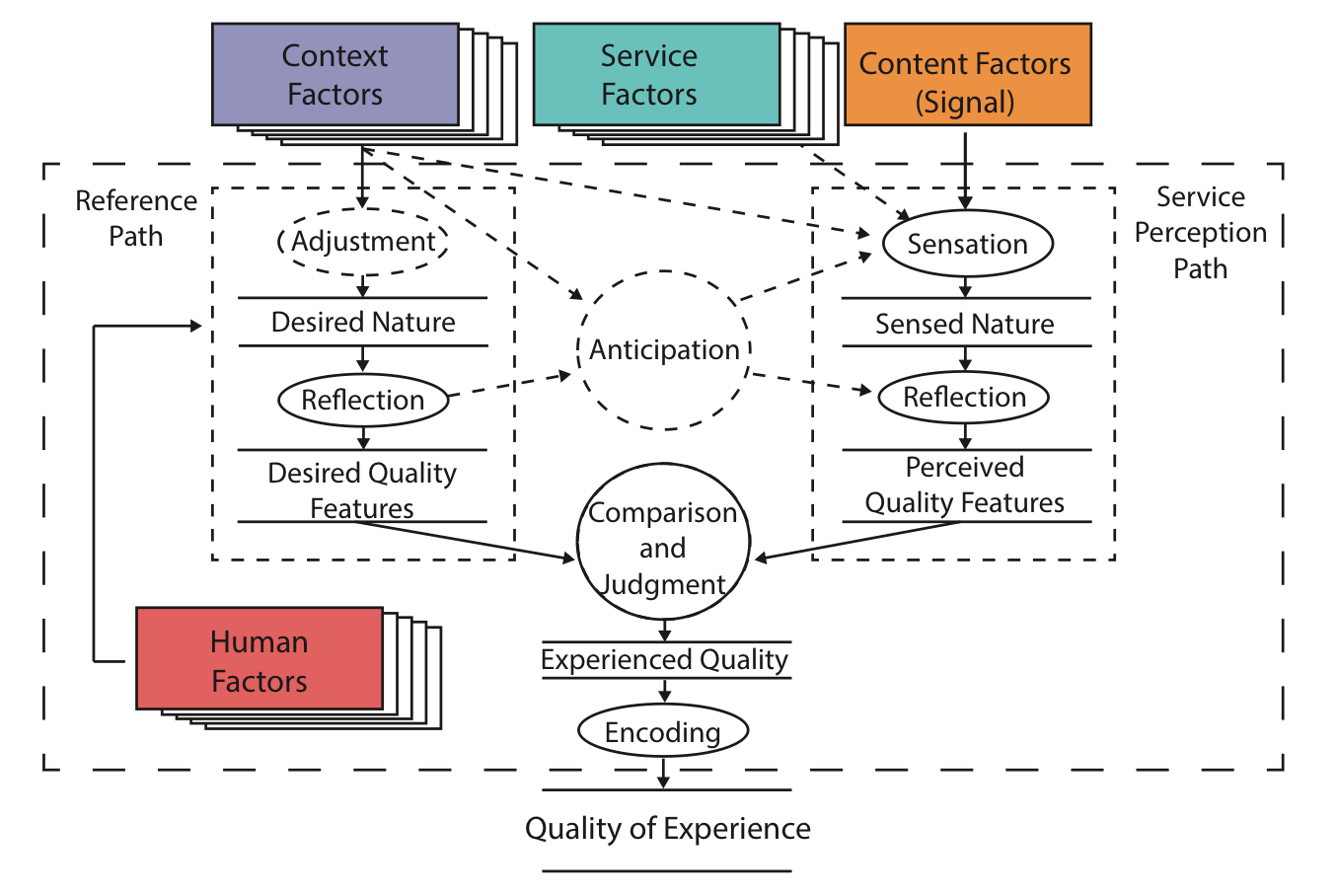Rethinking Quality of Experience Management
“It’s the human experience at the edge of the network that defines media delivery quality”

An emerging consensus within the research community defines Quality of Experience (QoE) as being
“the degree of delight or annoyance of the user of an application or service. It results from the fulfilment of his or her expectations with respect to the utility and / or enjoyment of the application or service in the light of the user’s personality and current state.”
Consideration is given to a number of important aspects. Firstly, the service is inextricably linked to human factors, i.e. the expectations of the user and the degree of success (delight or annoyance) must be adapted to an individual user’s expectations prior to the experience. Secondly, the prediction includes the complete end-to-end system effects, i.e. it is not a just a service or system metric and includes context regarding the environment and user. This is illustrated in the diagram below where the context, system and human factors all form part of the QoE formation process.
The concept of meaning in relation to the definition of QoE [1, pp.6–7] highlights that in the case of QoE for media (e.g. a video) transmitted over a network, the original media may reflect an artist’s or content producer’s effort to “create experiences … to deliberately achieve pre-determined user experiences.” This implies that meaning is related to the creator’s intentions but will be perceived through the perspective of the content consumer, as noted by Jekosch [2]. The Qualinet whitepaper [1] states that
“QoE does not explicitly address the degree of success achieved by an artist or creator to convey the intended message, but rather how a technical system or technical processing may have positively or negatively affected the success of conveying an artistic or of another (e.g. speech) message.”
In the process of developing the working definition for QoE, the whitepaper defines the terms quality and experience. It emphasises an understanding of these terms from the perspective of an individual, e.g. the definition of experience as “an individual’s stream of perception and interpretation of one or multiple events” and quality as “the outcome of an individual’s comparison and judgement process”. Quality is considered “in terms of the evaluated excellence or goodness, of the degree of need fulfillment, and in terms of a quality event” (see [2] and [3]) rather than as a set of inherent characteristics or ‘qualitas’.
In formalising the concept of QoE, the definition was explicitly designed to be applied to new domains as it is seen as “a concept that it is not only limited to the use of a system or service, as it is also related to the content itself” [1]. The authors assert that while “the QoE definition and related concepts and definitions may be driven by multimedia services and systems, it is expected that they shall also be applicable beyond.” [1, p.3]. They go on the suggest that:
“different application domains may have different requirements in terms of QoE. Thus, there is a need to provide specializations of a generally agreed definition of QoE … Consequently, an application-specific QoE definition is provided by selecting the influence factors and features of QoE reflecting the requirements of the application domain and incorporating them into the generally agreed
definition of QoE.” [1, p.10]
The Challenge is to design the future technology infrastructure and services in such a way that they can evolve to utilise it in a manner that allows the best possible QoE.

This page contains extracts from the Best Paper Award winning publication at QoMEX 2017: A. Hines and J. D. Kelleher, “A framework for post-stroke quality of life prediction using structured prediction,” 2017 Ninth International Conference on Quality of Multimedia Experience (QoMEX), Erfurt, 2017, pp. 1-6.
References
[1] European Network on Quality of Experience in Multimedia Systems and Services (COST Action IC 1003), “Qualinet White Paper on Definitions of Quality of Experience,” March, 2013.
[2] U. Jekosch, Voice and Speech Quality Perception: Assessment and Evaluation. Berlin, Heidelberg: Springer-Verlag Berlin Heidelberg, 2005.
[3] Martens, H., & Martens, M. Multivariate analysis of quality. An introduction. John Wiley & Sons, 2001.
[4] A. Raake, Speech Quality of VoIP: Assessment and Prediction. John Wiley & Sons, 2006.
